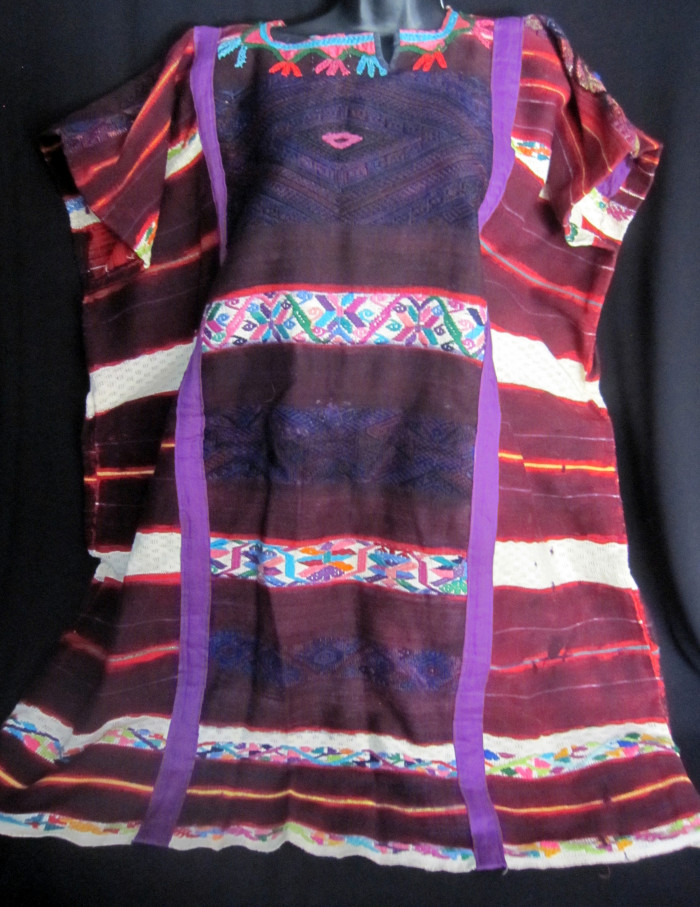Mexican Woman's Blouse: "Huipil"
This "huipil," a Nahuatl word for blouse, is from the Chinantec Indians of Oaxaca, Mexico. The huipil's purple color is from a dye called fuschina. Only married women are entitled to dye their huipiles this color. A huipil is the most common traditional garment worn by indigenous women from central Mexico to Central America, descendents of the Mayan people. It is a loose-fitting tunic. A huipil may be made from a single piece of fabric that has been folded in half or it may be made from two or three rectangular pieces of fabric which are then joined together with stitching, ribbons or fabric strips, with an opening for the head and, if the sides are sewn, an opening for the arms. The panels are not sewn together in the normal sense with seams but rather they are joined using ribbons, small strips of cloth or complicated stitching which has the edges of the panels touching or almost touching. This adds a layer of decoration to the garment. Traditional huipils, especially ceremonial ones, are usually made with fabric woven on a backstrap loom and are heavily decorated with designs woven into the fabric, embroidery, ribbons, lace and more. Many symbols have been identified in Mayan textiles. Diamonds represent the Universe and the path of the sun in its daily movement: the east is represented by the small diamond at the top; the west is depicted by the small diamond at the bottom. The large diamond in the center represents the sun at noon. Another figure represents a vulture. The vulture is part of the legend of Noah and the great flood that destroyed the previous world. In the myth, Noah sent a dove to seek dry land. When the dove, who had not eaten for forty days, came across land and saw all the corpses, it swooped down and began to eat them. At that moment it was transformed into a vulture. This symbol, then, followed contact with Christianity. Traditional huipils generally identify the indigenous group and the community of the wearer as each has their own designs for both weaving and embroidering.
Source:
Source cited: http://www.flmnh.ufl.edu/maya/maya7.htm http://en.wikipedia.org/wiki/Huipil Anthropologist and collector Nancy Romero
